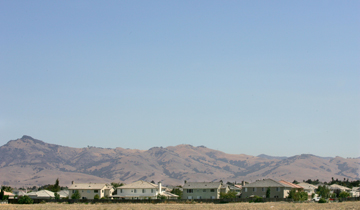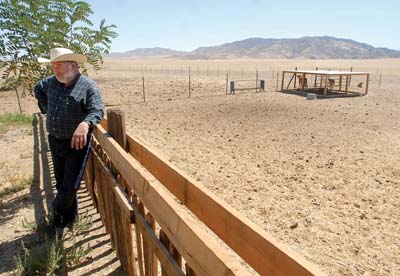Visionaries see transformative growth
By the year 2012, nearly four years after the building
moratorium is expected to be lifted, Hollister will likely have
1,194 new homes.
Visionaries see transformative growth
By the year 2012, nearly four years after the building moratorium is expected to be lifted, Hollister will likely have 1,194 new homes.
Imagine San Benito Street. No longer a throughway for Hwy. 25, the street is complete with wider sidewalks that invite lingering and crosswalks at every corner. Businesses along San Benito Street have parking in front of them. And the downtown is alive and vibrant.
The Downtown Specific Plan, which has been in place for a few years, has allowed mixed-use residential development as well as some infill with new mixed commercial developments. Developers within the downtown area were exempted from the Measure U growth cap.
The Hwy. 25 bypass has residential and commercial developments along it.
Hollister 2012 has a population of 44,790 people, according to population projections provided in the General Plan.
Estimates report that by 2020 the population should reach 53,330.
This is the shared vision of a group of planners and downtown advocates for Hollister in the years after a state-imposed sewer moratorium that dates back to 2002.
Award Homes, which is developing 650 of the proposed 1,194 new homes, is not allowed to complete their development until 2015, according to Hollister Planning Director Bill Avera.
Realistically, once the moratorium is lifted an estimated 570 homes will be built in that five-year period, according to Avera. The estimated number comes from a combination of the allocations that are currently out there, the Award Homes development and the number of units estimated under Measure U.
With all of those new homes in Hollister there will likely be a need for additional schools, however, no solid plans have been made between the city of Hollister and the Hollister School District. Avera has met with Hollister School District Superintendent Ron Crates.
Crates could not be reached for comments; however, Avera said that looking at the school populations numbers are down a little so they are expecting modest growth within the next five years.
Gordon Machado, a San Benito County planning commissioner and member of the new urbanism movement around Hollister believes that there will be infill.
“I think that we’ll definitely be looking at a lot of higher density housing,” Machado said. “There will be quite a bit of infill within the city.”
Machado anticipates that one of the things Hollister may see as development in downtown Hollister increases is the introduction of lower end condos.
“Something with smaller square footage,” Machado said. “Younger couples coming out of college are used to that sort of space. If we had condos that were 800 to 850 square feet I think they could get away with that. Build equity then when they want something bigger they can upgrade.”
Machado also thinks that park space will likely get more modular, with developers building park spaces into their subdivisions.
David Huboi, a local architect and planning commissioner for the city of Hollister believes that one of the things that will be maintained throughout the next five years is the character of neighborhoods throughout the town.
“That and the historical preservation,” Huboi said. “I think that there will be a lot of change in the downtown area, but I think the character will be preserved.”
Huboi envisions a possible hotel along the Hwy. 25 bypass along with the already announced Lowe’s store.
Huboi anticipates that park space will remain the same. However, he envisions that current parks will be enhanced.
“There’s a lot of opportunity at Park Hill,” Huboi said. “I could see maybe an outdoor amphitheater up there, or a Frisbee golf course.”
Economic Development Coordinator Jeff Pyle is less optimistic. Five years, after all, is not that much time, Pyle said. And while he has no crystal ball, he believes that things will stay relatively the same.
“Just as anywhere else, wherever residential growth occurs, retailers follow,” Pyle said. “I can’t say directly that new businesses will be drawn here [without significant growth], but the town can support new and existing businesses.”
Pyle cited Target as an example of a business that has done fine in Hollister without significant growth in the community.
“We need to target specific industries that would be good for the town,” Pyle said. “Recycling is one of those industries, possibly even biotech – potential industries that can grow modestly… Solar installation as an industry could also really take off.”
Pyle said he could envision some warehouse or assembly businesses as well.
“We need to get ready for replacing what’s here,” Pyle said. “When we lose a few businesses here, versus San Jose, you can really tell. With a town of this size we need to think turnover and what jobs are coming.”
Pyle said that within five years the city could expect the building industry to pick up.
“Worst case scenario,” Pyle said. “This town always has great places to eat and that’s not going to change.”








